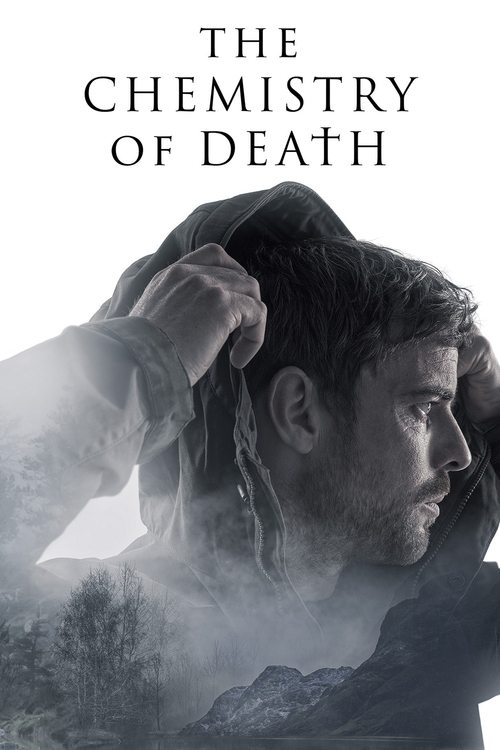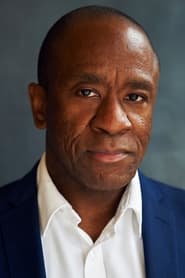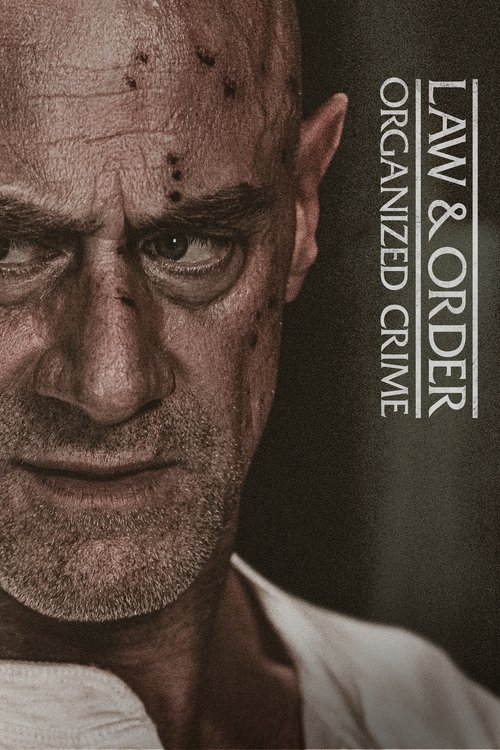
Ask Your Own Question
What is the plot?
The series "The Chemistry of Death" begins with Dr. David Hunter, a forensic pathologist, who has moved to the small village of Manham to escape his past. He takes on a role as a doctor in the village, hoping to leave his previous life behind. However, his plans are disrupted when two young boys, Neil and Sam Yates, discover the mutilated remains of a woman in the woods. The local police ask for David's expertise in the investigation, drawing him back into his old profession despite his reluctance.
As David becomes more involved in the case, he meets various villagers, including the previous general practitioner, Dr. Henri Maitland, who serves as a mentor and provides some background on the village's residents. David is warned about Gary Yates, the father of the boys who found the body, who has a short temper and is potentially abusive. David also meets Jenny, a local teacher, who seeks his help with the boys who are struggling with what they've seen.
The investigation intensifies as another woman goes missing, raising suspicions among the villagers. David must navigate his own demons while trying to solve the murder and prevent further crimes. The villagers become increasingly anxious as the mystery deepens.
Meanwhile, David's past continues to haunt him through flashbacks, showing the tragic events that led him to leave his previous life. Despite these personal struggles, he decides to continue assisting the police, driven by a sense of responsibility and a need to uncover the truth.
As the series progresses, David and the police uncover more evidence and follow leads that suggest the villagers might be hiding something. The tension builds as they face resistance from some of the villagers, particularly those who are suspicious of outsiders.
In a pivotal moment, the police discover that a corpse found in a cottage was a murder victim, which escalates the situation. The villagers are outraged when they learn that the police had not informed them about the severity of the situation, leading to a confrontation.
David decides to investigate further by checking an abandoned boat for evidence. During this investigation, he spots a fire in the distance and rushes to the scene with the police. They find Maggie Cassidy tied up inside a burning building, but she dies before they can rescue her.
The situation becomes dire when Michael Strachan, who is injured, asks to spend some final moments with Grace, his sister. He has a lighter, suggesting he might intend to harm himself and Grace. However, before anything can happen, the gas leak in the kitchen is addressed, and Michael ends up dead, while Grace escapes.
The mystery of Maggie's death is solved when David receives a voicemail from Duncan McKinney, a police officer who had been investigating the case. The voicemail reveals that Kelly Ann, a key figure in the mystery, was known as Becky in school. This information helps David connect the dots and identify Andrew as the killer of both Becky and Duncan, who was trying to cover his tracks.
Throughout the series, David's character evolves as he confronts his past and becomes more deeply involved in the investigation. Despite the resolution of the main mystery, the series concludes with David still grappling with his personal demons, suggesting a potential for further character development in future seasons.
More TV Shows Like This
Browse All TV Shows →What is the ending?
In the ending of "The Chemistry of Death," Dr. David Hunter confronts the truth behind the murders in the small town of Tynemouth. After a tense showdown with the killer, he manages to save a potential victim but is left grappling with the emotional toll of the events. The series concludes with David deciding to leave Tynemouth, reflecting on the impact of the case on his life and relationships.
As the final episode unfolds, the tension in Tynemouth reaches its peak. The scene opens with Dr. David Hunter, a forensic pathologist, pacing in his dimly lit office, the weight of the recent murders heavy on his shoulders. The town is gripped by fear, and David feels the pressure mounting as he tries to piece together the clues left behind by the elusive killer. His internal struggle is palpable; he is torn between his professional duty to uncover the truth and the personal demons that haunt him from his past.
In the next scene, David receives a frantic call from a local woman, who believes she has seen something crucial related to the murders. He rushes to her home, where the atmosphere is thick with anxiety. As he arrives, the woman reveals that she has been receiving threatening messages, and David's protective instincts kick in. He assures her that he will do everything in his power to keep her safe, showcasing his deep-seated need to protect others, a reflection of his own unresolved guilt over past failures.
The narrative shifts to a dark, rain-soaked night as David and the local police set up a surveillance operation based on the woman's information. The tension is palpable as they wait, the sound of rain tapping against the windows echoing the uncertainty in the air. Suddenly, a figure appears in the shadows, and chaos ensues. David's heart races as he realizes they have found the killer. A chase unfolds through the narrow, winding streets of Tynemouth, with David pushing himself to the limit, driven by a mix of fear and determination.
In a climactic confrontation, David faces the killer in an abandoned warehouse. The atmosphere is charged with adrenaline as they exchange heated words, revealing the killer's twisted motivations. David's emotional turmoil is evident; he is not just fighting for the lives of others but also battling his own inner demons. The struggle culminates in a physical altercation, where David's resolve is tested. He ultimately manages to subdue the killer, but not without sustaining injuries that leave him physically and emotionally scarred.
As the dust settles, David stands over the subdued figure of the killer, breathing heavily, the weight of the moment crashing down on him. He has saved the potential victim, but the victory feels hollow. The scene shifts to the aftermath, where David is seen in the hospital, recovering from his injuries. The emotional toll of the case is evident on his face; he is haunted by the lives lost and the darkness he has encountered.
In the final moments of the series, David makes the difficult decision to leave Tynemouth. He walks through the town one last time, reflecting on the connections he has made and the pain he has endured. The camera captures his somber expression as he bids farewell to the town that has become a part of his life, symbolizing his need to move on from the shadows of his past.
The series concludes with David driving away, the town fading in the rearview mirror. His fate is left open-ended, suggesting a journey of healing and self-discovery ahead, while the town of Tynemouth is left to grapple with the aftermath of the events that unfolded. The emotional weight of the story lingers, highlighting the complexities of human nature and the scars that remain long after the danger has passed.
Is there a post-credit scene?
In the 2023 series "The Chemistry of Death," there is indeed a post-credit scene that adds a layer of intrigue to the narrative.
As the credits roll, the screen fades to black before transitioning to a dimly lit laboratory. The camera pans slowly across a cluttered workbench filled with various scientific instruments, vials, and notes scattered haphazardly. A faint hum of machinery can be heard in the background, creating an atmosphere of tension and anticipation.
In the center of the room, a figure is silhouetted against a bright light, their face obscured. They are meticulously examining a series of photographs pinned to a corkboard, each depicting crime scenes that have been central to the series' plot. The camera zooms in on one particular photo, revealing a close-up of a victim's hand, with a distinctive mark that has been a recurring motif throughout the show.
The figure, now revealed to be a character who has been shrouded in mystery throughout the series, leans closer, their expression a mix of determination and obsession. They mutter to themselves about the need to "connect the dots" and "finish what was started," hinting at a deeper conspiracy that has yet to unfold.
As the scene concludes, the camera pulls back, revealing more of the lab filled with ominous shadows, and the screen cuts to black once more, leaving viewers with a sense of foreboding and anticipation for what lies ahead in the story. This post-credit scene effectively sets the stage for potential future developments, teasing the audience with unanswered questions and the promise of further exploration into the dark themes of the series.
What motivates the main character, Dr. David Hunter, to return to his hometown?
Dr. David Hunter, a forensic pathologist, is drawn back to his hometown due to a personal tragedy that haunts him. The emotional weight of unresolved issues from his past, particularly the loss of his wife, compels him to confront his demons and seek closure. His internal struggle is palpable as he grapples with guilt and the desire to protect his family from the darkness that surrounds him.
How does the discovery of the first body impact the community and Dr. Hunter?
The discovery of the first body sends shockwaves through the small town, igniting fear and suspicion among the residents. For Dr. Hunter, it reignites his professional instincts but also dredges up painful memories. He feels a mix of duty and dread as he realizes that his expertise is needed, yet he is reluctant to engage with the community that once turned its back on him.
What role does the character of Detective Sarah Wren play in the investigation?
Detective Sarah Wren serves as a crucial ally to Dr. Hunter, bringing her own determination and insight to the investigation. Initially skeptical of Hunter's methods, she gradually comes to respect his expertise. Their dynamic evolves from professional tension to a partnership built on mutual respect, as they navigate the complexities of the case and their personal histories.
How does the town's history influence the unfolding of the murder investigation?
The town's history is steeped in secrets and past tragedies that directly influence the murder investigation. As Dr. Hunter and Detective Wren delve deeper, they uncover connections between the current case and unresolved crimes from decades ago. This layered history creates a tense atmosphere, as long-buried resentments and fears resurface, complicating their search for the truth.
What internal conflicts does Dr. Hunter face as he investigates the murders?
As Dr. Hunter investigates the murders, he faces profound internal conflicts, torn between his professional obligations and his personal grief. The pressure to solve the case weighs heavily on him, exacerbating his feelings of inadequacy and guilt over his wife's death. His emotional turmoil is reflected in his interactions with others, as he struggles to balance his desire for redemption with the fear of losing himself to the darkness of the past.
Is this family friendly?
"The Chemistry of Death," produced in 2023, is not considered family-friendly due to its mature themes and content. The show delves into dark and complex subjects, including:
- Graphic Violence: There are scenes depicting crime scenes with blood and gore, which may be disturbing for younger viewers.
- Murder and Death: The central plot revolves around murder investigations, showcasing the emotional and psychological impact of death on families and communities.
- Psychological Tension: The series explores themes of fear, anxiety, and trauma, which may be unsettling for sensitive viewers.
- Mature Themes: Topics such as grief, loss, and the moral dilemmas surrounding death are prevalent, requiring a level of emotional maturity to process.
- Intense Emotional Scenes: Characters experience significant emotional turmoil, including despair and anger, which may be distressing for some audiences.
Overall, the show is intended for a mature audience and may not be suitable for children or those who are sensitive to such themes.


























